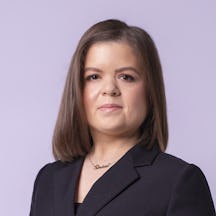Sinéad Burke is, among other things, a teacher, writer and CEO. But it is her love of fashion that has driven her to campaign for change and, ultimately, establish a consultancy that helps organisations move on from disability awareness to embracing accessibility in every aspect of their work. From the personal to the professional, she describes the shifting and complex roles clothes and fashion play in her life.
Fashion, identity, and the need for community
Words by Sinéad Burkephotography by Eilish McCormickaverage reading time 6 minutes
- Article

Fashion has always been a language for me. My clothes are more than just what I wear: they narrate who I am and who I want to be.
As a visibly Disabled woman, I have always been observed. When I was younger, people’s interest was rooted in curiosity but, as I got older, it could be unkind, intimidating and harmful. I was constantly reminded that, when people saw me, they made assumptions about what I could achieve and how I should exist in the world.
I deliberately picked clothes to portray my professionalism, or that showed I wasn’t a child, despite only being able to shop for kids’ shoes. Clothes became a way to code-switch, to tell people who I was, not despite my disability, but because of it. While I fell in love with fashion’s potential for storytelling, it became clear early on that fashion did not love me back.
As a little person navigating the world, I quickly realised that the industry I admired was not built with me in mind. Fashion is a realm of aesthetics, beauty and inclusion – or so it says. But its structures are often inaccessible, its runways celebrate one type of body, and its designs reflect a narrow view of humanity.
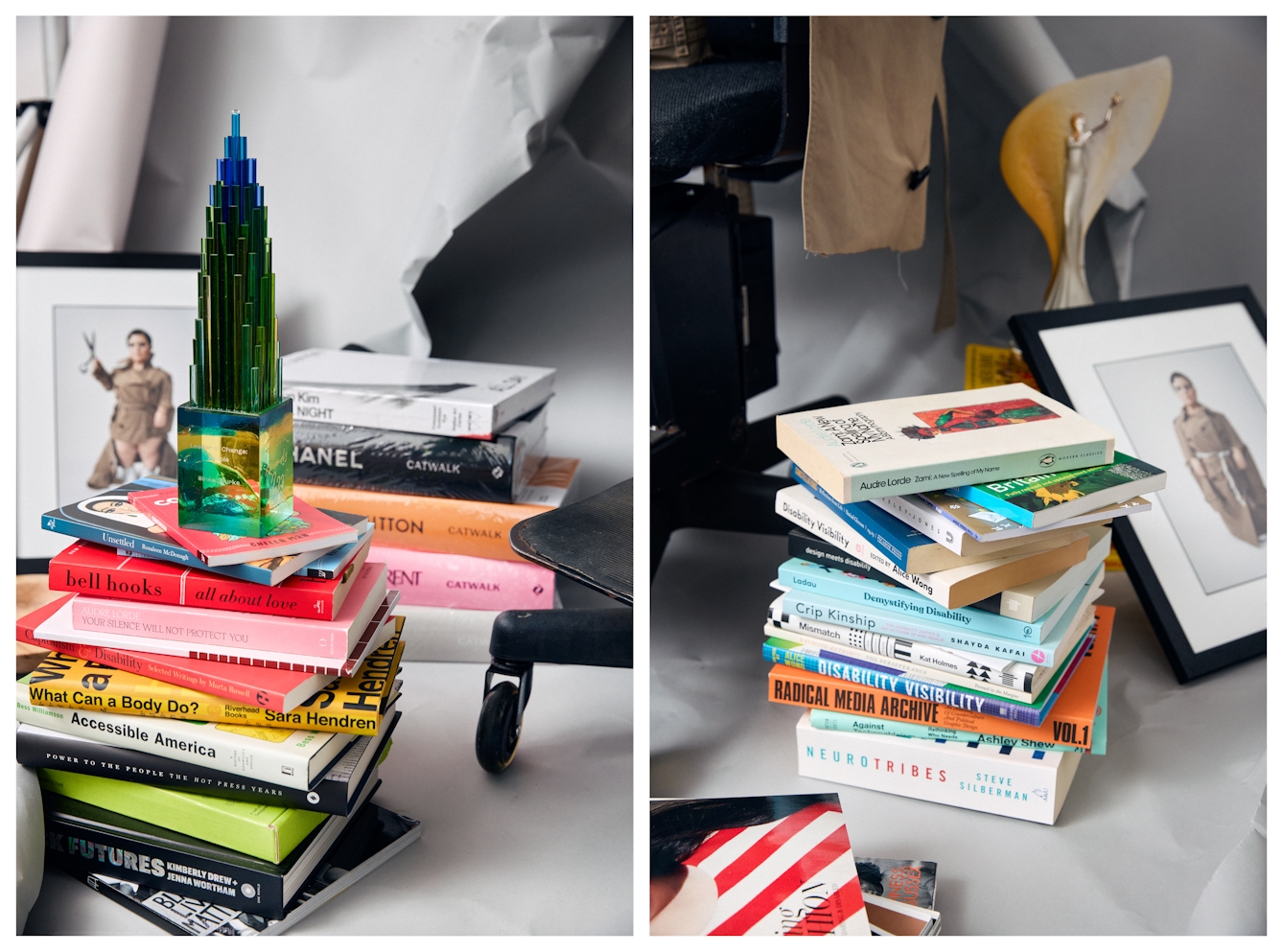
A selection of the books, objects and awards that represent Sinéad’s passions and achievements. Books about disability by Disabled authors, inform Sinéad’s approach to her work.
For many Disabled people, fashion feels like an exclusive club we aren’t allowed to join. The clothes in stores don’t fit our bodies or accommodate our mobility devices, there are very few representations of Disabled people in ad campaigns, and even fewer in leadership and design roles. The industry at large seems disinterested, perhaps even disdainful, about meaningfully including the multiplicity of experiences that make up the Disabled community.
In Vogue
Since I was about 16, my morning routine has been to read Women’s Wear Daily, the Business of Fashion and the Financial Times. Since then, I’ve added Vogue Business and Puck to my subscriptions, but my pattern of absorbing who is leading what organisation, what their strategy is, and how impact and progress are being measured remains the same.
I spent my teenage years attempting to spark conversations with my siblings about the overreliance on the Chinese market within financial projections, or the need to have both global and local strategies to resonate with customers and employees in Korea versus Jordan. I love my siblings and they love me, but they did not like this dinner-time conversation.
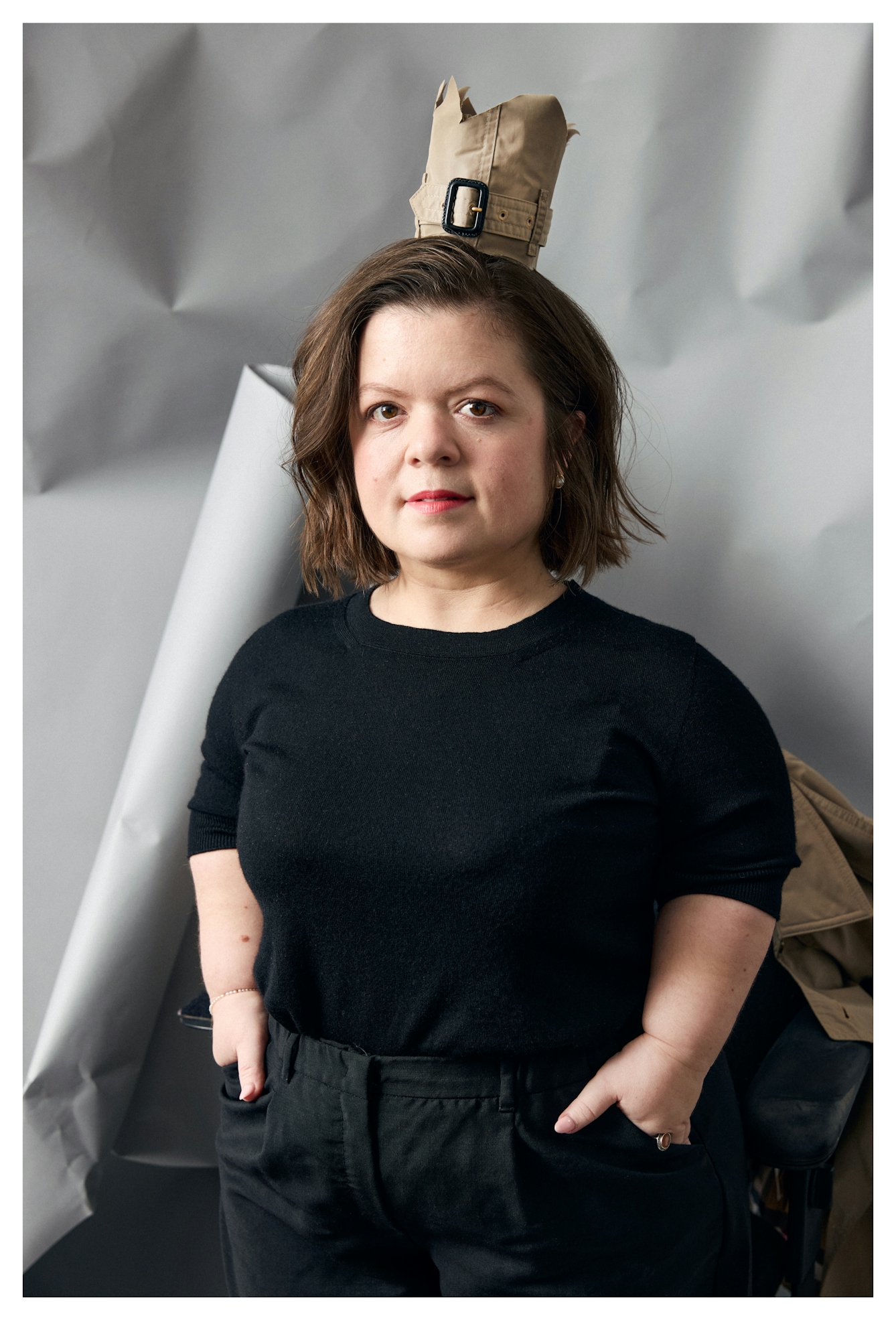
Sinéad wearing a crown cut from the cuff of a Burberry trenchcoat, created during her collaboration with the photographer Tim Walker which featured on the cover of Business of Fashion magazine.
I started a blog. It was a blank page for me to dissect and process information, and to share my own expertise and perspective. It’s not an understatement to say that blog changed my life. It began as a university assignment and brought me to places like TED and the World Economic Forum. It ultimately led me to set up Tilting the Lens, my disability-owned and led consultancy.
In September 2019, I had the privilege of being on the cover of British Vogue, for their ‘Forces for Change’ issue. Guest-edited by Meghan Markle, and photographed by Peter Lindbergh, I sat alongside Jane Fonda, Greta Thunberg, Ramla Ali and Laverne Cox. For many of us, it was the first time that we were on the cover of Vogue. For some, it was the first time our communities had ever been represented.
I left the set that day moved by the occasion, but I also had this knot in my chest. Getting to be the first to do something is a testament to hard work, but it’s equally a symbol of timing and privilege. While I got to be the first person with dwarfism featured in Vogue, I could not and would not be the last.
Tilting the lens
My ambition is bigger than Vogue. It’s bigger than visibility and representation. It’s bigger than fashion. I want society to value Disabled people as experts, innovators and leaders. I want industries to acknowledge and make space for lived experience as intellectual property.
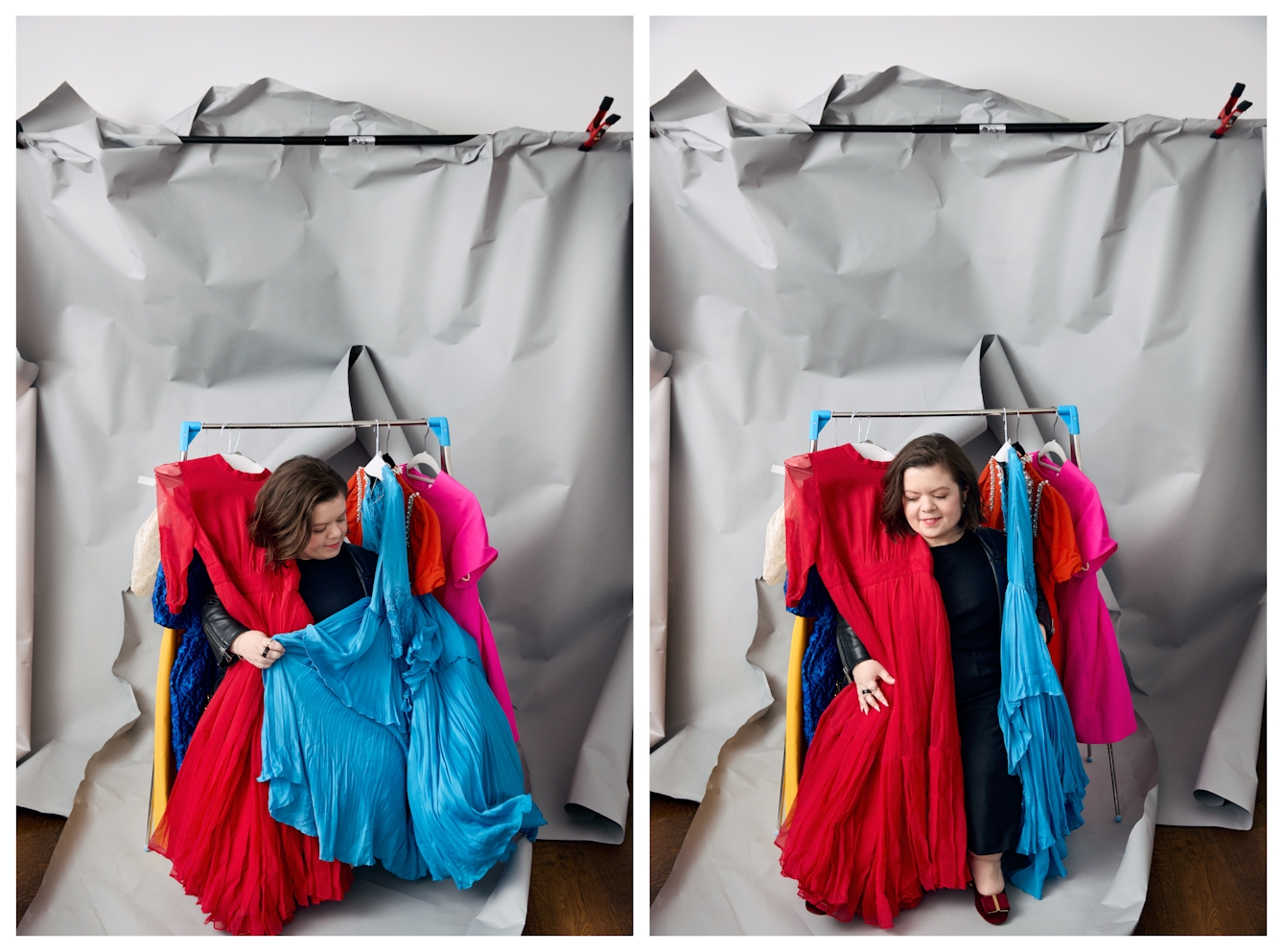
“Fashion is not just clothes: the industry tells us who is valued, powerful and visible. It has the potential to be a tool of liberation.”
I want disability justice to replace the social model, and for Disabled people to not merely be valued for their productivity or purchase power, but because of their right to exist, to be interdependent and to be valued.
I couldn’t do any of this alone. Tilting the Lens has a majority-Disabled team, based across Europe. Our work chips away at the systemic barriers that exist, but it takes time, patience and resources.
We may never see the benefit or the impact of the work that we are embedded in, and it doesn’t absolutely guarantee that representation and innovation will change anything. What it does do is create the conditions, organisational cultures, behaviours and attitudes to make industries more equitable, accessible and realistic.
There is one route to make change happen faster and with greater intentionality and focus: Disabled fashion designers. Whether it’s Lee McQueen, Sky Cubacub or Victoria Jenkins, excellent examples of Disabled designers already exist, but we need more.
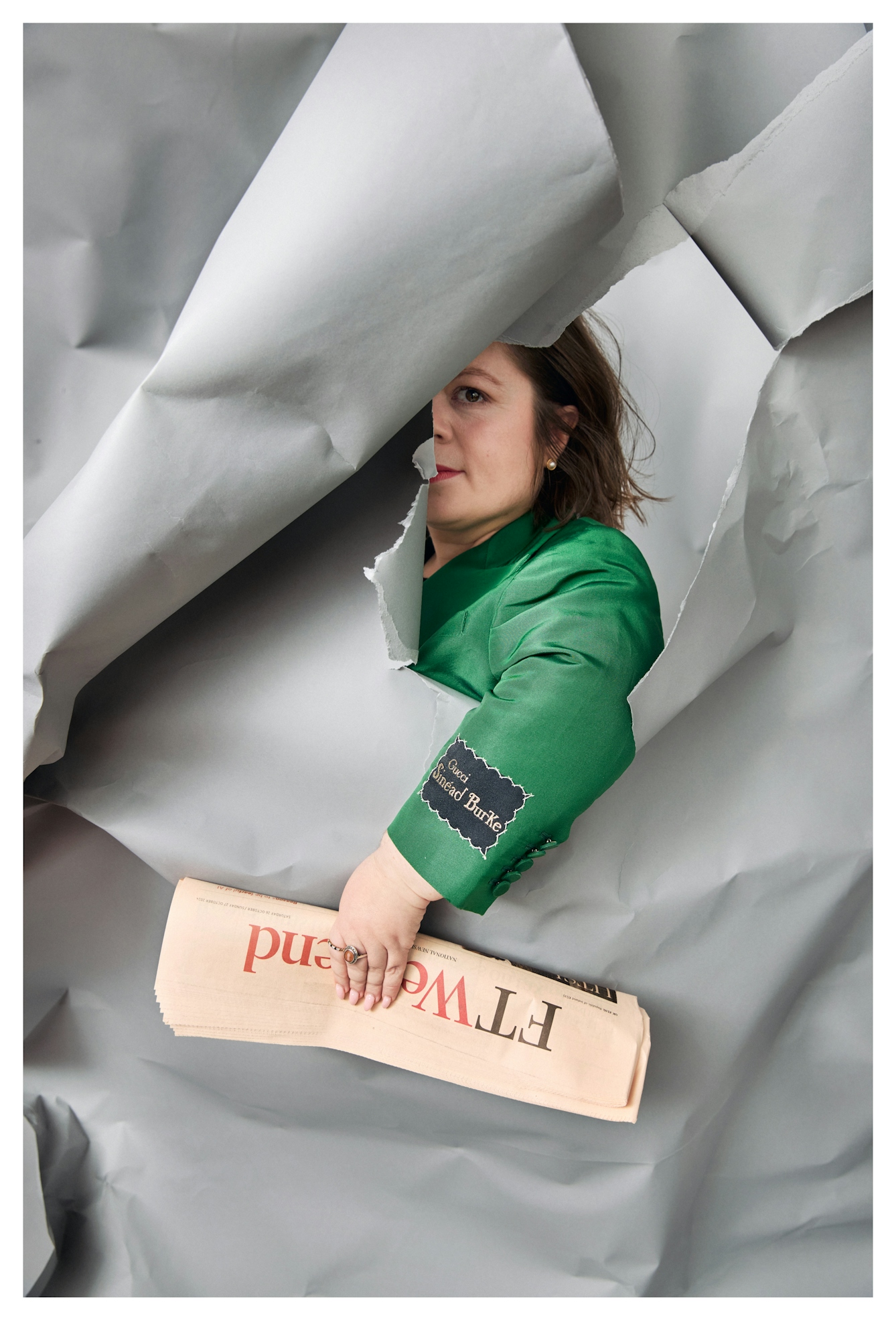
“My morning routine has been to read the Business of Fashion, the Financial Times and Vogue Business to absorb who is leading what organisation, what their strategy is, and how impact and progress are being measured.”
So, in partnership with Parsons School of Design in New York, we’ve created a fully funded scholarship for Disabled people to complete their undergraduate degree or master’s in design. Three students started the programme in September 2024, with five more joining in 2025.
We want to create a cohort, a collective, a community. It’s potentially the ‘thing’ I’m most proud of, although it is far more than a ‘thing’. I guess it’s because it’s rooted in creating a legacy, in building systemic change into the fashion industry, and creating a ripple effect that is wider than what we can measure.
Fashion is not just clothes: the industry tells us who is valued, powerful and visible. It has the potential to be a tool of liberation. It can be the means through which Disabled people reclaim their space in the world, showing that we deserve to be seen, valued, celebrated, recruited and promoted.
My relationship with fashion is complicated. I recently got to witness Alessandro Michele present his first collection for Valentino. His creativity and the efforts that his teams went to were magical. I love the industry deeply, but I also see the deep systemic injustices that continue to exist. Fashion has changed me. It has also offered me the chance to advocate for a better world – not just for me, but for everyone.
About the contributors
Sinéad Burke
Sinéad Burke is founder and CEO of Tilting the Lens, a consultancy founded in 2020 with the ambition to create equitable and systemic change through the lever of accessibility. With a majority-Disabled team based across Belfast, Berlin, Glasgow, London and Trim, they craft solutions with Disabled people to build an accessible and equitable world.
Eilish McCormick
Eilish is a photographer from Northern Ireland working throughout Ireland and the UK, mostly within the fashion and advertising industries. Her personal work is inspired by her childhood and the landscape and communities that she has grown up with and continues to be surrounded by.
